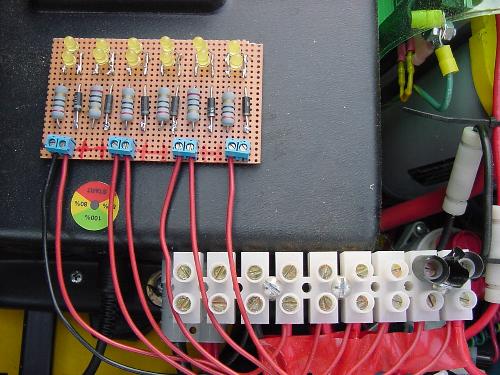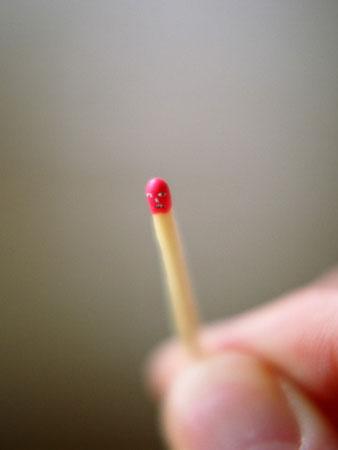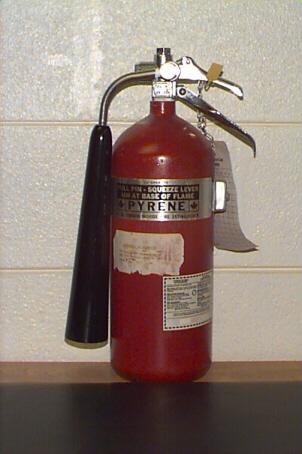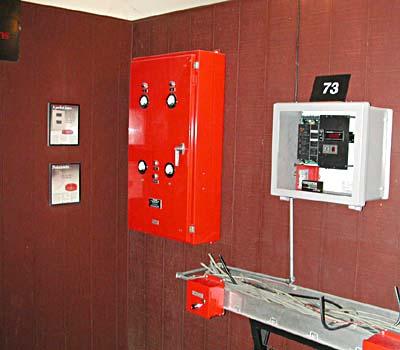Fireproof Home!

Fire is friendly when used with utmost care but it is often destructive when not handled properly. A combination of oxygen, heat and fuel is required to ignite a flame. Fire gathers oxygen from the air around it; and the more oxygen the fire gathers, the fiercer it becomes. A fire needs fuel to grow. Fuel is an object that burns. Heat is the required temperature to ignite the fuel into flames.
How a Fire Starts
There are a number of reasons that can start the fire,
Radiation:
When the heat is transferred to the fuel through heat waves and rays, these waves warm the fuel; and when the fuel gets hot enough, it can ignite itself.Electricity
Electricity causes severe fire damages. When an electrical circuit becomes overloaded, it begins sparking and causes fire into the contents of the building and surrounding. Electric heaters are a concern during the winter if they are placed near clothes and flammable objects. Over heated plugs, sockets and the blown fuses can also start fire. Also “Lighting” can ignite the fuel. If the lighting having intense heat strikes any fuel, it sets the object on fire.
Electrical gadgets for fire safety
(This Picture is Contributed by "Subhash")
Chemicals
Flammable chemicals can cause the fire. Fire may break out during chemical experiments made in the labs. Household chemicals such as turpentine oil, floor cleaners or insecticides may get ignited when they are left carelessly. An open can of flammable liquids such as varnish, petrol, kerosene oil etc. can result into dense fire.Friction
Friction ignites the fire. When two things are rubbed against each other, they generate heat and eventually cause the fire. For example when you rub your hands in the winter, you make them warm. A meteor in the space burns up due to friction against the air. If you strike a stick on the match box, it gets ignited.Heating and cooking equipments
Cooking stoves are the main cause of fires. This fire often breaks out due to unattended cooking rather than mechanical failures of stoves. Oil and ghee (fat) are common causes of fire in the kitchen and they can set the whole kitchen on fire if not treated properly.Basements and Garage
Basement and garage usually provide storage for rags, papers, worn out electric cords; plastic boxes etc. Many electric fires occur in these areas. These items should be treated immediately. Some other concerns are combustible items such as wallpaper, curtains, and clothing which are left unattended around the heater.Candles
The tiny flame of a candle can also do big damage if not handled properly. Candle related fire starts due to draughts that catch burnable objects towards the candle.Smoking
Careless smoking causes the fire. The cigarette starts fire if it’s not put out completely. The famous california fire which damaged several acres of forest was also started by a cigerette. Falling asleep while smoking can also result into serious fire damages.Suspected arson
Arson is major reason of residential fire which results into the deaths. It’s the second largest cause of residential fires.
Don't play with FIRE
(This Picture is Contributed by "Subhash")
NOTE: Besides the above mentioned objects, some other facts like spontaneous combustion, open flames and sparks, chimneys and fuels, children playing with matches can cause the fire.
Fire Safety Tips:
1. Install Fire Extinguishers
Install a fire extinguisher in or near your kitchen. Fire extinguisher is a protective device used to control fire. It is often extinguishes fire in emergency conditions.
Some fire extinguishers are following.
Carbon Dioxide (CO2) Extinguishers:
CO2 extinguishers are useful for short distances i.e. from 3 to 8 feet. Carbon dioxide, a non-flammable gas, is stored as a compressed liquid in the extinguisher. It cools the surrounding air as it expands. The cooling air often causes ice to form near the surface where the gas is expelled from the extinguisher. Such extinguishers should be installed in the kitchen, garage or workshop. You should know the functionality of the extinguisher very well to stop any mishap caused by fire.
CO2 extinguishers
(This Picture is Contributed by "Subhash")
Halon extinguishers
Halon extinguishers are used to protect electrical equipments. The gas contained in these extinguishers stops the chemical reaction that takes place when the fuel burns. They usually range from 4 to 6 feet.Water extinguishers:
Water extinguisher uses water and compressed gas to blow out ordinary types of fire. It may be one option to dump water on the fire but it is not always the best option in case live electric wires are involved.Fire blankets:
Fire Blanket is safety device used to extinguish small fires in early stage. Fire blanket covers the burning object completely and makes a solid surface around the fire.2. Set Fire Safety Alarm:
Set a fire alarm on Fire Control Panel which detects fire and signals to fire services. Fire Service or Master Control traces the exact location of fire alarm on a building map and put out the fire. “Manual pull-type alarm” should be located at the places such as Master Control, Generator Building, Fire Pump Room, Corridor, Recreation Room, Library, and Kitchen.
Fire safety alarm to safegaurd your home
(This Picture is Contributed by "Subhash")
3. Do not play with fire
Never let anyone play with matches, lighters and other the fire sources which can cause fire and damage the property. Keep them away from fireplaces, and stoves or ovens. Children are often responsible for most of the fires caused by such negligience.4. Do not open Closed Doors in case you feel that the room on the other side may have fire
If you see the smoke coming from the cracks around the door, do not open the door. Check whether the doorknob is warm. Do not touch the door if it is very hot. Quickly shut the opened door if you feel a burst of heat.
5. Escape through the door or window
Try to escape through the door that leads to the outside. But it is necessary to know about the doors’ functionality. Even the windows on a higher floor can be escape routes. Open the window and stand in front of it. Put a piece of clothing or a towel over your mouth to keep smoke away from breathing in. Never hide under the bed or in a closet. Firefighters and the elders will have a hard time to search for you. They shall get you out of the fireplace as soon as they find you.6. While the clothes catch the Fire
Do not run in case your clothes catch the fire. Instead of running away, stop and lie on the ground and then roll covering your face with your hands. This will cut off the air and put out the flames. Learn the procedure easily with “Stop, Lie and Roll”.7. Be prepared for emergency
It’s always better to make perfect practice to save from the fire. “Fire Drill” at home gives a chance to escape in such hard times. You and other members can get out of the house quickly and safely by using this fire equipment. Keep “Fire Drills” at home regularly. Fire Extinguisher help avoid accidental fire in the kitchens or homes. It extinguishes not only the fire but saves our invaluable lives also.
Fire Extinguisher help avoid accidental fire in the kitchens or homes. It extinguishes not only the fire but saves our invaluable lives also.
 A building constructed with fire resistant material can safe guard you and your family from fire damage. This article will tell you more about fire resistant build materials.
A building constructed with fire resistant material can safe guard you and your family from fire damage. This article will tell you more about fire resistant build materials.
.Modern smoke sensors or Gadgets:These smoke sensors or gadgets may be permanently installed in buildings for the early detection of fire.
.Fire fighting equipment: The suitable equipments for detecting, extinguishing, and warning of fire should be placed in the buildings. These equipments should be located at such places that they are easily accessible.
.Automatic sprinkle system:This system consists of automatic sprinkles attached to a piping system containing water under pressure and connected to a water supply so that water discharges immediately from the sprinkles opened by a fire.
.Smoking
.Electrical Wiring
.Heating and Cooking Equipment
 Kota stone flooring is a subtle blend of grandeur and luxury giving the interior and exterior a gorgeous look.......
Kota stone flooring is a subtle blend of grandeur and luxury giving the interior and exterior a gorgeous look.......
 To get maximum ventilation and natural light in your house, make sure the building is properly oriented. Orientation of building saves energy and provides comfortable living as well. This article tells you about various factors and benefits of building orientation.
To get maximum ventilation and natural light in your house, make sure the building is properly oriented. Orientation of building saves energy and provides comfortable living as well. This article tells you about various factors and benefits of building orientation.
 Preview some of the most impressive pictures of kitchen from GharExpert Gallery.
Preview some of the most impressive pictures of kitchen from GharExpert Gallery.
 A solid roof on building is very important for everybody living in the house. The roof should be constructed in a way that assures you great safety. Here are given details about different types of roofing.
A solid roof on building is very important for everybody living in the house. The roof should be constructed in a way that assures you great safety. Here are given details about different types of roofing.
 Frames of doors and windows are most important parts of your doors and windows. They are available in different size, height, width and shapes. Frames hold locks and hinges and support door and windows to shut and open easily. Here is what you need to know about different doors and windows frames.
Frames of doors and windows are most important parts of your doors and windows. They are available in different size, height, width and shapes. Frames hold locks and hinges and support door and windows to shut and open easily. Here is what you need to know about different doors and windows frames.
 Different steel bars are recommended for their relative tensile stresses.Steel bars are major components of construction.Here is what you need to know about steel bars (Sariya).
Different steel bars are recommended for their relative tensile stresses.Steel bars are major components of construction.Here is what you need to know about steel bars (Sariya).
 Brahmasthan is a powerful zone of the house. It should have open space for flow of energy in the house. The positive energy is very useful for living beings of the occupants of the house.
Brahmasthan is a powerful zone of the house. It should have open space for flow of energy in the house. The positive energy is very useful for living beings of the occupants of the house.
 Brick work is an important part of construction work done with the help of bricks and cement mortar. It is done with different quality of bricks with different ratios of cement mortar according to the requirement.
Brick work is an important part of construction work done with the help of bricks and cement mortar. It is done with different quality of bricks with different ratios of cement mortar according to the requirement.
 Are you remodeling your bathroom? Bathroom shower doors make your bathroom a style icon. Read the following article that will help you select the bathroom shower door that will exactly suit your bathroom.
Are you remodeling your bathroom? Bathroom shower doors make your bathroom a style icon. Read the following article that will help you select the bathroom shower door that will exactly suit your bathroom.
 Living room or Drawing room should be located in east or north direction. The ideal location of a living room depends on plot facing.
Living room or Drawing room should be located in east or north direction. The ideal location of a living room depends on plot facing.
Cracks can happen due to foundation movements and settlements of building, thermal movements, chemical reactions, elastic deformations and shrinkage etc. in buildings. They can damage plaster of walls, ceilings and destroy the beauty of the structure also. Let’s know their reasons in detail and get preventive measures.
To minimize the danger of blistering, risk of steam formation etc. Storage temperature of 60 degree C is recommended. This may be increased up to 65 degree C when soft water is used and the storage capacity is limited.
Without knowing perfect mixture of cement and sand you can not achieve your goal.
Manufacturing date, grade and type play vital role in purchasing right cement and there should be no lumps in it.
HOME DECOR & HOME LIGHT,SANITARY WARE
HOME LIGHT & HOME DECOR

Home elevation photo for a simple two storey home

Playing with Home Room placement at home

Front view of Home

Home Theatre in Drawing Room

Home Theatre in Living Room

Home Theatre in Living room

Home Theatre in Drawing Room

Front Home

Front View of Home

Home Interior

Modern Drawing Room and Home theatre

Home Interior of Living Room

Dream Home

home

Home study
home design
Single Storey Home Exterior

Mandir/Pooja Ghar...for Home,Office,Shop
HOME DECOR & HOME LIGHT,SANITARY WARE
HOME LIGHT & HOME DECOR

Town Home floorplan

Home

Hammocks in Home

Study room or home office design

Model Home

Home Office Interior, Flooring, ceiling and Furniture design

Home Office Seating

Door opening in a home

3D Home

An umbrella outside your home can improve your style tremendously

Home study
home design
Single Storey Home Exterior

Mandir/Pooja Ghar...for Home,Office,Shop

TV below staircase

Home office in garage
Home 3D

Home Gym in Basement

Modern 3D Home Elevation

elevation

Modern Exterior view of home
home plan 3D

Angular view for Exterior elevation of home

Dream Home Apartment Elevation

layout plan

home my

home theater

Double story home elevation design

layout plan

Home Exterior

home elevation design with gate and boundary wall by jagjeet

4 storey home elevation design

MAJITH HOME

Beautiful Home elevation

Reception counter

Home

Home

External view of home

dream home

Anil Ambani Home Pic-1
Home Layout

Reception counter

modern home

Interior Stairs design for modern architecture home
Copyright 2007-
GharExpert.com All rights reserved.